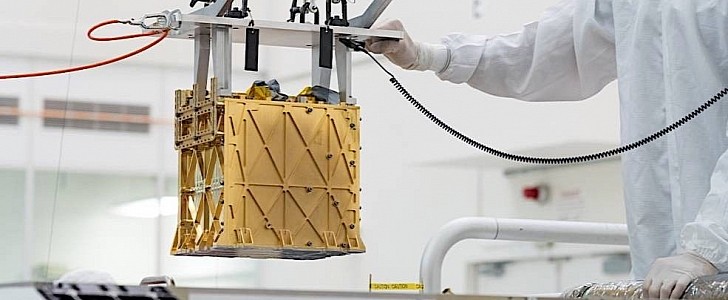Remember all those terraforming books you used to read, all those movies you used to watch? Well, at least part of them is no longer science fiction, as for the first time ever, a human-made machine was capable of generating oxygen on another planet.
It is one of the many tasks the Perseverance rover has to complete on Mars. Aside from launching helicopters and gathering samples for a future mission to bring back to Earth, the rover is also used to generate oxygen where there is none. And on April 20, as the world was captivated by the Ingenuity helicopter, it did.
Perseverance used for the task something called Mars Oxygen In-Situ Resource Utilization Experiment (MOXIE), a toaster-size instrument used to separate the oxygen atoms from carbon dioxide molecules—and Mars has plenty of carbon dioxide, as 96 percent of its atmosphere is made from the stuff. It was not an easy task, as the process required temperatures of 1,470 degrees Fahrenheit (800 Celsius), but the deed was done.
MOXIE did not produce much oxygen, only about five grams of it, which according to NASA would translate into 10 minutes worth of breathable air for an astronaut. Still, it has the potential of generating 10 grams per hour, and the space agency plans to keep at it.
“This is a critical first step at converting carbon dioxide to oxygen on Mars,” Jim Reuter, associate administrator for NASA’s Space Technology Mission Directorate, said in a statement.
“MOXIE has more work to do, but the results from this technology demonstration are full of promise as we move toward our goal of one day seeing humans on Mars. Oxygen isn’t just the stuff we breathe. Rocket propellant depends on oxygen, and future explorers will depend on producing propellant on Mars to make the trip home.”
Even if practical applications for the technology are limited for now, the achievement opens the doors for crewed missions to be able to generate their oxygen on-site and use it both for breathing and powering the rockets meant to take them back home.
Perseverance used for the task something called Mars Oxygen In-Situ Resource Utilization Experiment (MOXIE), a toaster-size instrument used to separate the oxygen atoms from carbon dioxide molecules—and Mars has plenty of carbon dioxide, as 96 percent of its atmosphere is made from the stuff. It was not an easy task, as the process required temperatures of 1,470 degrees Fahrenheit (800 Celsius), but the deed was done.
MOXIE did not produce much oxygen, only about five grams of it, which according to NASA would translate into 10 minutes worth of breathable air for an astronaut. Still, it has the potential of generating 10 grams per hour, and the space agency plans to keep at it.
“This is a critical first step at converting carbon dioxide to oxygen on Mars,” Jim Reuter, associate administrator for NASA’s Space Technology Mission Directorate, said in a statement.
“MOXIE has more work to do, but the results from this technology demonstration are full of promise as we move toward our goal of one day seeing humans on Mars. Oxygen isn’t just the stuff we breathe. Rocket propellant depends on oxygen, and future explorers will depend on producing propellant on Mars to make the trip home.”
Even if practical applications for the technology are limited for now, the achievement opens the doors for crewed missions to be able to generate their oxygen on-site and use it both for breathing and powering the rockets meant to take them back home.

